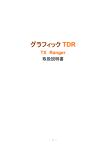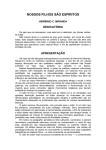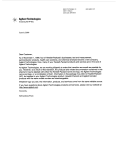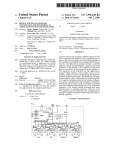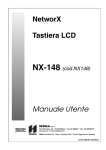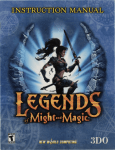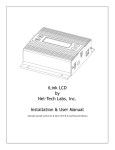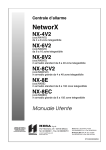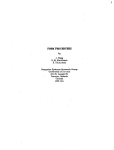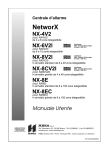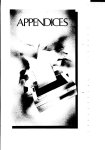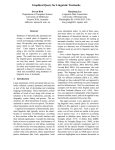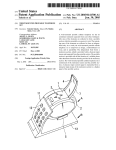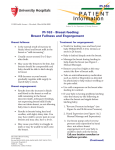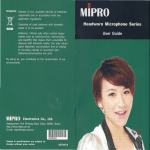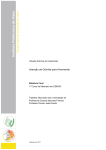Download Hand manipulated data apparatus for computers and video games
Transcript
US007042438B2 (12) (54) United States Patent (10) Patent N0.: McRae et a]. (45) Date of Patent: HAND MANIPULATED DATA APPARATUS 6,049,327 A * FOR COMPUTERS AND VIDEO GAMES 6,097,369 A 6,154,199 A (76) Inventors: Michael William McRae, 4025 Central ’ ’ 2004/0012564 A1* Fremantle Ct., Roseville, CA (US) ( * ) Notice: 4/2000 Walker et a1. ............ .. 345/158 8/2000 Wambach 11/2000 Butler 0 13 e 3' 1/2004 Zngf et a1. ................ .. 345/158 OTHER PUBLICATIONS ?gségl’bj?lihljliaglllliit ilsclgzz’riigllno ’ May 9, 2006 113111? t 1 Ave., Fair Oaks, CA (US) 95628; Adrian Gregory Albright’ 216 CA (Us) 95833’ US 7,042,438 B2 Ergo Touch, “Rocket Mouse”, OWner’s Manual, (1 page, ’ Subject to any disclaimer, the term of this double sided). Essential Reality, “The P5 Controller User Manual”, User Manual’ (8 Pages, Smgle slded); _ _ patent is extended or adjusted under 35 U_S_C_ 154(b) by 62 days Essentlal Reahty, “The P5'Gam1ng Glove”, Descnptlon and Spec1?cat1ons (2 pages, s1ngle slded). * (21) Appl. No.: 10/656,763 . . “ted by exammer Primary ExamineriVijay Shankar (22) Filed: Sep. 6, 2003 (57) (65) US 2005/0052412 A1 (51) (58) Mar. 10, 2005 A computer or video game device for generating hand manipulated data. The device consists of one or more sensors that are mounted on the human hand. The sensors are IIlt- Cl- G09G 5/00 (52) ABSTRACT Prior Publication Data (2006-01) conveniently located for easy access and manipulation by G09G 5/08 (2006-01) US. Cl. .................... .. 345/156; 345/157; 345/158; opposing ?ngers on the same hand that the sensors are mounted on. This arrangement overcomes the limitations of 345/160 a tabletop computer mouse by not requiring a planar surface, Field of Classi?cation Search ...... .. 345/156469; 341/20i22 and by not requiring the user to hold Onto the device Additionally the sensors are located in such a Way that they See application ?le for Complete Search history, do not impede standard o?ice procedures such as using a computer keyboard, Writing With a pen, holding a phone, etcetera. The device can also be quickly and easily attached (56) References Cited U.S. PATENT DOCUMENTS 4,414,537 4,988,981 5,444,462 5,488,362 5,489,922 5,581,484 A A A A A A 5,638,092 A * 5,999,166 A * 11/1983 1/1991 8/1995 1/1996 2/1996 12/1996 Grimes Zimmerman et 31. Wambach Ullman et a1. Zloof Prince 6/1997 12/1999 Eng et a1. ................. .. 345/158 Rangan .................... .. 345/157 or removed by the user. Various embodiments of the inven tion include “Wired”, “Wireless”, multiple ?nger, universal right or left-hand, universal ?nger or thumb application, and universal side or top mounted sensors. Existing technologies and manufacturing techniques are utilized to minimize cost. Uses include personal computer, video game, and industrial applications. 26 Claims, 14 Drawing Sheets U.S. Patent May 9, 2006 Sheet 1 0f 14 EEEEEEEEEEEEEEE ?g Fig. 1B US 7,042,438 B2 U.S. Patent May 9, 2006 Sheet 2 0f 14 US 7,042,438 B2 U.S. Patent May 9, 2006 Sheet 3 0f 14 US 7,042,438 B2 U.S. Patent May 9, 2006 Sheet 4 0f 14 Fig. 3D US 7,042,438 B2 U.S. Patent May 9, 2006 Sheet 5 0f 14 US 7,042,438 B2 U.S. Patent May 9, 2006 Sheet 6 0f 14 US 7,042,438 B2 U.S. Patent May 9, 2006 Sheet 7 0f 14 US 7,042,438 B2 U.S. Patent May 9, 2006 20 Sheet 8 0f 14 US 7,042,438 B2 U.S. Patent May 9, 2006 Sheet 9 0f 14 US 7,042,438 B2 U.S. Patent May 9, 2006 87 Sheet 10 0f 14 Fig. 8A US 7,042,438 B2 U.S. Patent May 9, 2006 Sheet 11 0f 14 US 7,042,438 B2 U.S. Patent May 9, 2006 Sheet 12 0f 14 US 7,042,438 B2 166 164 U.S. Patent May 9, 2006 Sheet 13 0f 14 US 7,042,438 B2 SENSOR 1 ; SENSOR TO COMPUTER " ELECTRONICS —_> 11 COMPUTER INTERFACE A 172 Flg. 10 SENSOR » If“ COMPUTER 1 > IV a ,_ 3 II a SENSOR T 0 / \ 17s 176 TRANSMITTER ELECTRONICS RECEIVER INTERFACE / N —9 186 / TO COMPUTER ELECTRONICS 172 INTERFACE / BATTERY 182 / TRANSMITTER % RECEIVER 180 184 Fig. 11 U.S. Patent May 9, 2006 Sheet 14 0f 14 US 7,042,438 B2 SENSOR INPUT r“ 1 210 / _> ., LEFT HAND 5 SENSOR TO " ——_e " ; L % TELEVISION \ VIDEO GAME 192 TRANSMITTER 208 / INTERFACE ELECTRONICS BOX ELECTRONICS 188 RECEIVER / BATTERY 206 / 200 To VIDEO GAME TNTERFACE / TRANSMITTER ELECTRONICS 196 RECEIVER / 2 4 TRANSMITTER 0 198 202 \ BATTERY 190 \ 1n -——> ——'9 TRANSMITTER RIGHTHAND II a R A SENSOR INPUT INTERFACE ELECTRONICS \ 194 US 7,042,438 B2 1 2 HAND MANIPULATED DATA APPARATUS FOR COMPUTERS AND VIDEO GAMES hands, ?ngers, or Wrist. This is a particular issue When moving the Wrist and ?ngers to type on a keyboard. Other alternatives locate the sensors on parts of the hand that subject them to accidental activation When holding a glass, BACKGROUND Writing With a pen, typing on a keyboard, or performing other standard operations. Still other solutions separate the 1. Field of Invention This invention relates to a human machine interface and, more particularly, to a computer mouse type device for entering data to a computer, video game, or similar machine. mouse cursor movement function from the mouse “click” function to such an extreme that once the desired cursor position is obtained, the user must then reposition the hand (and hence loose the desired cursor position) in order to 2. Description of Prior Art It is knoWn in the ?eld of computers to utiliZe remote computer interface devices that are hand-operated and used activate the mouse “click” feature. Therefore the use of such devices brings practical computer operation to a standstill. in conjunction With the keyboard. A Well-knoWn computer Here too a need exists for a mouse alternative that avoids accidental sensor activation. interface device is commonly knoWn as the computer The third major problem in the industry is related to the tactile and gripping ability of the human hand. As Will be seen, many virtual reality glove type devices cover the ?nger-pads of the human hand. In other Words; devices that mouse, Wherein the mouse is moved by hand over a planar Work surface to move the cursor on the computer monitor. The mouse also typically includes an electrical sWitch that can be activated When the cursor is in a desired location in order to cause an entry to the computer. A problem With the mouse-type devices is that the mouse is used in connection With a keyboard for data input. As a 20 and gripping surfaces of the ?ngertips. This is particularly important When considering the registration “bumps” on the result, the user must repeatedly move his or her hand betWeen the keyboard and the computer mouse Work sur “F”, “J”, and “5” keys of a computer keyboard. Therefore a face. This hand movement required for the operation of the computer mouse is both inef?cient and tiring to the user. Therefore, a need exists for a mouse-type computer interface device that does not require the user to move his or her hand from the keyboard to a remote location in order to enter need exists for a mouse alternative that leaves the ?nger 25 mouse-type data into the computer. Additionally this device must not interfere With keyboard use, or the use of other 30 standard of?ce equipment. Another problem With mouse-type devices is associated in pads exposed When locating sensors in the ?ngertip area. For example, US. Pat. No. 4,414,537 (Grimes) describes a glove equipped With sensors for detecting sign-language character type hand movements. This invention requires the user to be ?uent in Single Hand Manual Alphabet for the American Deaf. Although unique, this invention is expen sive to manufacture With its many sensors. It should also be noted that the “F”, “J”, and “5” keys on a computer keyboard have special Braille type bumps that are sensed by the user’s ?ngertips to properly locate the hands and ?ngers on the their use With laptop computers. The environment in Which a laptop computer is used Will typically eliminate planar surfaces as required by the typical computer mouse. Simi larly, Wireless computer keyboards have been recently intro locate sensors in the ?ngertip area also cover the ?nger-pads. In doing so the user is left Without the tactile touch senses 35 keyboard. This invention violated that ability by covering the ?ngertips. Therefore this invention Would make it dif ?cult for an operator to type. Additionally, it Would be very duced to the market place. HoWever the user cannot fully utiliZe the remote capabilities of these Wireless keyboards dif?cult for the user to Write With a pen, or ansWer the phone because the user must be near a planar surface in order to use Without accidentally entering data. Lastly, this invention is a tabletop mouse. Therefore, a need exists for a mouse-type 40 not Well suited to generate mouse-type cursor data. computer interface device that does not require a planar US. Pat. No. 4,988,981 (Zimmerman, et al) describes a glove-type device used to manipulate virtual computer surface to operate the mouse. objects. The glove has several sensors and ultrasonic trans mitters, and the computer monitor has several ultrasonic Many alternatives exist for the computer mouse. It Will be seen hoWever that most computer mouse alternatives suffer from at lease one of three major problems in the industry. The ?rst major problem in the industry relates to developing receivers. The sensors are used to determine hand manipu lation and the ultrasonic transmitters and receivers are used neW hand-eye-coordination skills. For example, conven tional computer mouse users have developed their hand to determine relative hand position. This invention is Well suited to determine virtual three-dimensional positioning, 45 and the manipulation of virtual computer objects. HoWever eye-coordination skills to manipulate a mouse curser through a single sensor (i.e. a track-ball, mouse-stick, optical sensor, touch-pad, etcetera.). HoWever many computer 50 the many sensors and ultrasonic transmitters and receivers make the device complicated and expensive. Additionally, as mouse alternatives require multiple sensors for mouse cursor compared to a conventional computer mouse, the device control, and hence require multiple body parts to manipulate those sensors. Moving these multiple body parts (hands, requires excessive computer processing to manipulate the ?ngers, Wrist, etcetera) in a coordinated effort requires an virtual objects. The invention also conceals the tips of the 55 The second major problem in the industry is related to accidental sensor activation (accidental data entry). Most user to operate the keyboard, Write With a pen, or ansWer the phone Without accidentally entering data. 60 computer mouse alternatives are prone to accidental sensor activation in one Way or another. This includes accidental sensor activation caused by movements of the human hand, and accidental sensor activation caused by touching or holding things With the human hand. For example, virtual reality type gloves detect hand motions, and Will move the mouse cursor and enter commands by any movement of the ?ngers Whereby the user looses tactile senses as needed for keyboard operation. Lastly, it Would be very dif?cult for the entirely neW hand-eye-coordination skill set. Therefore a need exists for a mouse alternative that does not require a neW hand-eye-coordination skill set. 65 US. Pat. No. 5,489,922 (Zloof) utiliZes tWo concentric rings placed on the index ?nger of each hand. The user spins the ring on the right hand for vertical cursor movement, and the ring on the left hand for horizontal cursor movement. Further, each ring can be depressed to activate a sWitch so as to simulate a typical mouse button. Although a novel invention, this device requires the user to learn a Whole neW set of hand-eye coordination skills. This is because the horiZontal and vertical cursor movements originate from tWo US 7,042,438 B2 4 3 different sensors, and hence requires tWo different and independent body functions. Even more, the user must combine these tWo neW hand-eye coordination skill sets in requires the user to elevate his or her hand aWay from order to have ?uid cursor movement. This in itself is yet 2. The invention is limited to a track-ball sensor for cursor another hand-eye coordination skill that must be mastered by the user. Additionally the cost and labor to manufacture movement and does not consider other sensor types a device that requires tWo sensors for a cursor movement is etcetera. the keyboard in order to avoid accidentally striking a keyboard key. such as a mouse-stick, optical sensor, scroll-Wheels, 3. The user must use tWo different ?ngers to execute the more costly than a device that only requires one. The device is also very mechanical in nature and is subject failure and computer “drag-and-drop” command. This is because one ?nger must be activating one of the palm-mounted repeated maintenance. Further, this invention is intended for buttons, While the thumb simultaneously activates the use by persons Who have tWo hands. Therefore a disabled or track-ball. handicapped person having only one hand or missing ?ngers Would have di?iculty in using these devices. Lastly, it Would 4. The palm-mounted buttons Will be accidentally acti vated When performing standard tasks such as holding be very dif?cult for the user to operate the keyboard or a drinking glass, ansWering the phone, shaking hands, ansWer the phone Without accidentally entering data. U.S. Pat. No. 5,444,462 (Wambach), and Us. Pat. No. 6,097,369 (Wambach) both describe a glove type device that pushing against the armrests of a chair While standing has various sensors mounted on it. Vertical cursor movement is obtained by moving the index ?nger up and doWn, and 20 horizontal cursor movement is obtained by rotating the Wrist left or right. Although novel inventions, these devices require the user to learn a Whole neW set of hand-eye coordination skills. This is because the horiZontal and ver tical cursor movements originate from tWo different sensors, the thumb or other ?ngers of the hand. 7. The glove type device cannot be quickly and conve niently attached or removed. This makes it more dif ?cult to Wash hands, shake hands, use the bathroom, or 25 and hence requires the user to manipulate tWo different body-parts. This requires the user to learn and develop tWo operators Were using the same device. 30 device With sensors mounted on the ?ngertips. This device movement is more costly than a device that only requires surface such as a tabletop. The manner in Which each sensor 35 fashion also presents a problem, as the glove cannot be conveniently attached or removed. This makes it more dif?cult to use the bathroom, Wash hands, etcetera. Finally, Although a novel invention for keyboard entry, this device 40 mounted device used to acquire ?nger manipulation data. easily attached or removed. 45 ring transmits a signal that is received by multiple receivers imbedded in the computer keyboard. The receivers deter mine cursor movement as the ring is moved up, doWn, and 50 user to Wear a sensor cap on each ?ngertip. This cap blocks across the keyboard. A special button is mounted adjacent to the keyboard space bar to accommodate the mouse “click” the sensory tactile touch as needed by the user for keyboard operation. Additionally the sensors used in the device are button feature. Although an interesting invention, this device requires specialiZed computer keyboards With multiple expensive, bulky, cannot be easily attached or removed, and are not Well suited for mouse equivalent data. U.S. Pat. No. 5,638,092 (Eng, et al), describes a ring type device that is mounted on the ?nger of a computer user. The The data obtained from this device is used to analyZe human ?nger movements in order to better understand and operate robot hands. Although an interesting invention, this device interferes With computer keyboard entry by requiring the is not Well suited to generate mouse equivalent data. The many sensors are also expensive and Would be accidentally activated When using the computer mouse, ansWering the phone, etcetera. Lastly, this glove type device cannot be does not Wish to generate mouse commands. U.S. Pat. No. 6,526,669 B2 (Nagata), describes a hand reacts during each virtual keystroke alloWs the computer to predict What key the user intends to depress. This alloWs the user to incorporate any ?at surface as a virtual keyboard. it Would be nearly impossible to use the computer keyboard or perform other standard of?ce functions Without acciden tally activating the sensors on these devices. Therefore these units must be disabled or entirely removed When the user U.S. Pat. No. 5,581,484 (Prince), describes a glove type is attached to a computer Which interprets relative ?nger positions as the ?ngers are moved and pressed against a ?at to manufacture a device that requires tWo sensors for cursor one sensor. Having the sensors mounted in a glove-type perform other hygiene functions. 8. The invention Would require periodic sterilizing and cleaning similar to that of an article of clothing. This Would be especially necessary in the event that multiple neW, different, and independent hand-eye coordination skills. Even more, the user must combine these tWo skills together in order to have ?uid cursor movement. This in itself is yet another neW hand-eye coordination skill that must be mastered by the user. Additionally the cost and labor up, etcetera. 5. The invention fails to utiliZe a convenient means to turn the unit on or o?‘. 6. The invention does not consider mounting sensors on receivers. These keyboards Would be expensive and Would 55 make it dif?cult to use the ring device With existing com U.S. Pat. No. 6,154,199 (Butler), describes a glove-type puters Without also replacing the keyboard. This device also device that has a track-ball mounted on the side of the index requires the user to remove the ring-hand from the keyboard position, and then move it according to desired cursor direction. Then the user must reposition the ring-hand on the ?nger, and buttons mounted on the palm of the hand. Cursor movement is obtained by manipulating the track-ball With the thumb, and button activation by pushing the palm 60 mounted buttons With the ?ngers. Although an interesting user to abandon their keyboard hand position just to try and ?nd it again. This device has also divided the hardWare and operator means of generating mouse equivalent data. Cursor invention, this device has several limitations as folloWs: 1. The user must make a conscience effort to not acci dentally strike a computer keyboard key While sWeep ing the ?ngers around to press the palm-mounted buttons. In other Words, When transitioning from key board entry to palm-button activation, the invention keyboard. This tedious back and forth procedure requires the position is generated by moving the ring, but the mouse 65 “click” button is placed on the keyboard. This prevents the user from generating mouse equivalent data Within the con?nes of a single hand. This leads to the ultimate short US 7,042,438 B2 6 5 coming of the device. This shortcoming is due to the fact that g) The device Would require periodic sterilizing and once the user locates the ring for desired cursor position; the user must then move the hand (ring) back to the keyboard “click” button in order to activate the mouse command. In doing so, the user looses the desired cursor position. There fore the user is unable to simultaneously position the curser and click the keyboard mouse button With a single hand. cleaning similar to that of an article of clothing. This Would be especially necessary in the event that multiple operators Were sharing the same device. h) The device requires the user to rotate the Wrist between @180 degrees. This is a di?icult task to perform and could eventually lead to a repetitive-stress injury. i) The device fails to utiliZe Wireless communications Hence the device is unable to function as a computer mouse replacement. Additionally, the user’s hand must never leave the proximity of the receivers in the computer keyboard as Whereby the user Would not be tethered to the com puter. this Would render the device unusable. Therefore the user is alWays tethered to the computer keyboard. Lastly, the cursor Will be moving across the screen in an uncontrolled manner as the user types on the keyboard. This Will be an obvious 15 annoyance the user. Pub. No.: US 2004/0012564 A1 (Zngf, et al), describes a virtual reality glove type device that has a tilt sensor mounted on the back of the hand, and bending sensors mounted on each ?nger of the glove. As the user rotates their Wrist between @180 degrees, the tilt sensor changes the corresponding roll-angle of the on-screen cursor. Once the desired angle of travel is obtained, the user then moves the 20 25 the cursor from right-to-left along the line of travel. Once the little ?nger. Although unique, this device has several limi 30 manner. dimensional positioning device that utilizes optical electron hand-eye-coordination skill set. This is due to the fact that cursor movement is obtained from three different sensors instead of just one. Hence, three different body 35 ics. The device consists of a tabletop enclosure that has a light source and a light detector. The user Wears a ring type re?ector that positions a small mirror on the underside of the hand. Light is then shone upWard from the tabletop unit to move the cursor instead of just one body element. This the mirrored re?ector under the hand. The user then moves puts the invention at a disadvantage When compared to the hand (re?ector) over the device to re?ect the light source devices that obtain cursor movement from a single sensor. 40 to speci?c locations on the light detector. Re?ecting light on different areas of the light detector results in a corresponding tWo-dimensional mapping, or cursor positioning, on the function such as typing on the keyboard. This is due to the fact that as the user types (or performs other functions), the mouse cursor Will be moving across the computer screen. Third-dimensional command data (if needed) is obtained by raising the re?ector and hence loWering the intensity of re?ected light on the light detector. computer screen in an uncontrolled manner. Adding “mouse-click” activation from the fact that the unit fails to include a mouse “click” button. Additionally, the device cannot be used When performing U.S. Pat. No. 5,999,166 (Rangan), describes a three a) The device requires the user to learn a Whole neW simultaneous movements. Hand gestures are thereby converted to com to the fact that as the user types, the mouse cursor Will be moving across the computer screen in an uncontrolled mouse “click” button by bending either the middle, ring, or b) The device cannot be used When performing any other that is placed on the backside of the hand. This ?exible circuit board has a special characteristic in that it can detect ?exation. In doing so the device can detect ?nger and thumb other functions such as typing on the keyboard. This is due cursor is at the desired location, the user then activates the elements (Wrist, thumb, index-?nger) are required to reality glove type device that is used to control computer animations. The glove contains a hand shaped circuit board puter commands for controlling computer-based animations. from left-to-right along the angular line of travel. LikeWise tations as folloWs: capped persons Who are missing one or more ?ngers. U.S. Pat. No. 6,049,327 (Walker, et al), describes a virtual Although a unique invention, the device is not Well suited for mouse equivalent computer commands. This is due to the thumb toWard the index ?nger in order to move the cursor the user moves the index ?nger toWard the thumb to move j) The device requires the use of all the ?ngers of the human hand, and therefore cannot be used by handi 45 middle, ring, and little ?nger Will bring complete Once the cursor is in the desired location, the user then depresses one of the buttons located on the front (?nger) side of the tabletop unit. Although an interesting invention, the mayhem to the computer environment. device Would be difficult to use in place of a computer mouse. This shortcoming is due to the fact that once the user c) The cost and labor to manufacture a device that requires three sensors for cursor movement is more costly than 50 locates the re?ector ring for desired cursor position; the user a device that only requires one sensor. must then move the hand (ring) back to a location Where the d) The device is not designed for universal right or left hand operation. This is due to the fact that When the device is moved from the right hand to the left, all of the sensors Will function in the opposite direction. This Would be a particular problem for ambidextrous users. buttons can be depressed. In doing so, the user looses the desired cursor position. This problem is further magni?ed 55 This problem Would require expensive bi-directional sensors, and/or a separate device program for left handed users. Additionally, using the device on the left hand places the sensors on the Wrong side of the glove. This may interfere With other Work functions. 60 e) The device fails to utiliZe a convenient means to turn The Rocket Mouse (by ErgoTouch) is another computer the unit on or off. mouse type device. This unit has a track-ball and mouse f) The glove type device cannot be quickly and conve niently attached or removed. This makes it more dif ?cult to Wash hands, shake hands, use the bathroom, or perform other hygiene functions. When the re?ective ring is Worn on the same ?nger that Will be moving doWnWard to depress the mouse button. There fore the user is unable to simultaneously position the curser and click the mouse button. Hence the device does not function as a computer mouse replacement. Additionally, the user’s hand must never leave the proximity of the tabletop unit, as this Would render the device unusable. Therefore the user is alWays tethered to the computer desk. buttons mounted in a hand-held package. The user holds the 65 device betWeen the index ?nger and the thumb. Activation of the track-ball and mouse buttons is by Way of the thumb. Although an exiting invention, this device requires the user US 7,042,438 B2 7 8 to hold onto it. Therefore the unit must be put doWn in order to use the keyboard, answer the phone, Write With a pen, glove. Therefore, this device fails to take advantage of more etceteras. Another application for data entry devices is for video and computer games. These devices, called “controllers”, are Well knoWn and typically involves some kind of hand held joystick With multiple buttons, ray guns, race car steering 5 sophisticated sensors such as a track-ball, mouse-stick, scroll-Wheel, or even a hand mounted mini joystick. Also, the device completely covers the hand and therefore blocks the tactile senses. Further, the device can be easily short circuited as the electrical contacts of the device are exposed. This Would preclude drinking from a metal cup, or resting the hand on a metal object. Lastly, the glove cannot be quickly and easily attached or removed from the hand. Wheels, and so on. Like a computer mouse, most of these devices require the user to hold onto them. Therefore the user must put the device doWn in order to use a second data OBJECTS AND ADVANTAGES input device, ansWer the phone, etcetera. Additionally, devices such as a steering Wheel and foot pedals are sta tionary and do not provide users the freedom to move about. Therefore, a need exists for a portable device that does not require the user to hold onto it, and one Which doesn’t interfere With other activities such as using a second data 5 input device or ansWering the phone. Further, video and Accordingly, several objects and advantages of our hand manipulated data apparatus are: a) To provide a hand manipulated data apparatus that does not require a planar surface. b) To provide a hand manipulated data apparatus that does computer game operators enjoy the feeling of becoming not require the user to remove their hand from the engrossed in the game by having a data input device attached keyboard area. to their body in some manner. Therefore a need exists for a 20 device that can be easily attached and removed from the user’s body. Virtual reality has also recently gained much interest in the video and computer game industry. HoWever, these devices typically rely on expensive transmitters and receiv keyboard. 25 ers to obtain relative positioning. They are also typically arranged in a glove type fashion that blocks the users tactile senses, and makes attachment and removal of the device more cumbersome. These devices also make it difficult to perform other tasks such as ansWering the phone or using the computer keyboard Without accidentally entering a com user to activate more than one sensor at a time for cursor movement, and by not requiring the user to learn 35 gun. This is accomplished by mounting infrared transmitters on the gun, and infrared receivers on the video or computer display. The receivers determine the relative signal delay interface. HoWever it requires the user to hold onto the pointing device. Therefore the user must put the device doWn in order to perform other tasks such as ansWering the 40 45 phone, drinking from a glass, using a second data input device, etcetera. Also, the transmitters must be spaced a signi?cant distance from each other in order to obtain proper resolution for position and orientation. This makes for a bulky and aWkWard user interface. These transmitters and receivers are also expensive and add to the complexity of the 50 device. Additionally, video and computer game operators 55 ing more than a series of electrical contacts mounted on a number of additional circuit components. j) To provide a hand manipulated data apparatus that appeals to handicapped persons. k) To provide a hand manipulated data apparatus that appeals to persons suffering from carpal-tunnel-syn drome. 1) To provide a hand manipulated data apparatus that can places of the hand, or hands. m) To provide a hand manipulated data apparatus that is suitable for use With a plurality of sensor types, con?nes of the hand that the sensors are mounted on. 60 as up-doWn, left-right, and Weapons ?re. Joystick type functions are accomplished by moving the Wrist in various directions, and push-button type functions are obtained by interesting transformation of a joystick, this device is noth simple and inexpensive to manufacture by utiliZing existing technologies, and by introducing the feWest n) To provide a hand manipulated data apparatus that can have all of the sensors manipulated solely Within the glove represent corresponding joystick type functions such contacting one or more ?ngers to the thumb. Although an entirely neW hand-eye coordination skills. g) To provide a hand manipulated computer mouse that is suitable for computer use, video games, virtual reality, and industrial applications. h) To provide a hand manipulated data apparatus that can easily be used to perform the “drag-and-drop” com puter function. i) To provide a hand manipulated data apparatus that is have a plurality of sensors mounted on numerous enjoy the feeling of becoming engrossed in the game by having a data input device attached to their body in some fashion. This device fails to do so. Lastly, the device is not Well suited to generate computer mouse equivalent data, should it be used in that capacity. U.S. Pat. No. 5,488,362 (Ullman, et al), describes a glove type device that is used in place of a hand held joystick. The connection of different exposed electrical contacts on the handling other objects. f) To provide a hand manipulated data apparatus that is user friendly and easy to operate by not requiring the One such example is U.S. Pat. No. 6,540,607 B2 (Mokris, betWeen the various transmitters to determine position and orientation. This device is Well suited for video game applications that require a point and shoot type of user d) To provide a hand-manipulated data apparatus that is not accidentally activated by performing standard office procedures such as ansWering the phone, Writing, or holding a drinking glass. e) To provide a hand manipulated data apparatus that does not block the tactile senses of the ?nger pads, Whereby the user is not impaired When using the keyboard or 30 mand. Lastly, these devices are not Well suited for other uses such as generating mouse equivalent data et al), describes a video or computer game device that detects the location and orientation of a pointing device or c) To provide a hand manipulated data apparatus that is not accidentally activated When using the computer 65 0) To provide a hand manipulated data apparatus that can be quickly and easily attached to the user’s hand, or removed from the user’s hand. p) To provide a hand manipulated data apparatus that can be quickly and easily stored on the user’s body. q) To provide a hand-manipulated data apparatus With features that compare to today’s most sophisticated desktop computer mice. US 7,042,438 B2 10 r) To provide a hand manipulated data apparatus that compares to today’s most sophisticated video game enclosure as the sensors. For a “Wired” mouse, the electron ics enclosure typically resides next to the computer. For a “Wireless” mouse, the electronics interface (transmitter) may be packaged With the sensors, or in a separate enclosure on controllers (user input devices). s) To provide a hand manipulated data apparatus that can either have a “Wired” or “Wireless” connection to the the user’s Wrist, or other part of the body. The “Wireless” computer and or video game. receiver Would typically reside next to the computer, or could even be built into the computer. Further objects and advantages Will become apparent from a consideration of the drawings and ensuing description. removed from the users hand. In one embodiment the SUMMARY mounted Wireless transmitter enclosure, Where they can also The foregoing and other objects of the invention are attained in the transformation of a tabletop mouse (or video provides the user With the necessary freedom to perform game controller), into a device that resides on the human hands, shaking hands, eating, and so on. hand(s). This is accomplished by placing sensors (buttons, sWitches, scroll-Wheels, track-ball, joystick, etc.) on the a mouse that resides on the human hand is very bene?cial. When necessary, the ?nger-mounted unit can be easily ?nger-mounted sensors are easily retracted to the Wrist be quickly re-deployed back onto the user’s ?nger(s). This personal hygiene tasks such as using the bathroom, Washing This transformation of a conventional tabletop mouse, to human hand. These sensors are located on the human hand so as not to impede ordinary hand functions or touch-senses, but yet to alloW the sensors to be activated by other parts of the hand such as the thumb and ?ngers. Having the sensors 20 the sensors are located so that the sensors are not acciden activated Within the con?nes of the human hand eliminates the need for a planar surface that an ordinary tabletop mouse requires. Further, it eliminates the need for the user to remove their hand from the keyboard area in order to enter tally activated When ansWering the phone, Writing on paper, typing on the computer, holding a drinking glass, etcetera. In addition, conventional computer mouse sensors are utiliZed 25 mouse-type data. It is also understood that contemporary computer mice provide the user With selectable options When con?guring the computer mouse. For example the user Whereby the user is not required to learn extensively neW hand-eye coordination skills. All of the functions that are typical of a conventional tabletop mouse are easily obtained through this invention, but the limitations of a tabletop could con?gure the mouse for a left-handed person in Which the “left-mouse-button” Would be con?gured as the right, and vice-versa. This invention also retains these types of One can easily see that a planar surface is not required for cursor movement; the user’s ?nger pads are not covered and therefore the user’s keyboard touch-senses are retained; and mouse are eliminated. 30 user con?guration capabilities. In a typical embodiment, a dual function mouse-stick sensor is placed on the thumb side of the index ?nger. (Note Although the above discussion focused on the invention being mounted on a single hand, it could just as easily be mounted on both hands, other ?ngers or thumb, multiple ?ngers, or even other parts of the body. Mounting the invention on other parts of the body may be especially that a mouse-stick sensor is the type of mouse sensor 35 applicable for disabled or handicapped persons. It can also commonly employed in the center of laptop computer key be seen that the invention can easily be used for computer boards. It looks like a small button and is gently pushed in and video game applications. various directions resulting in mouse cursor movement on Finally, the loW cost and ease of manufacture of the the computer screen. The most recent development in mouse depressing the mouse stick. This Will be referred to as a dual present invention is obtained by utiliZing existing technolo gies, and by introducing the feWest number of additional circuit components. Further objects and advantages Will function mouse stick.) The user’s thumb then has easy become apparent from a consideration of the ensuing access to this sensor and can activate this sensor by gently description and draWings. stick design employs a built-in button that is activated by 40 pushing the mouse-stick in the direction of desired cursor movement. Additionally the user can utiliZe the dual func tion of the mouse stick by pressing doWnWard on the mouse FIGS. 1A & 1B are a “Wired” illustration of a basic form stick and activating the built in click-button. This built in button Would typically be con?gured by the user to be of the invention utiliZing a single mouse-stick, and a single button. equivalent to the left-click button of a tabletop mouse. This dual function mouse-stick then permits ordinary cursor 50 FIGS. 2A & 2B are a “Wired” illustration of the invention utiliZing a single mouse-stick, a single button, a horizontal navigation scroll Wheel, and a vertical navigation scroll Wheel. movement, text highlighting, “drag-and-drop”, “double click” and so forth; all With the users thumb. Adjacent to the mouse-stick sensor is a separate click-button. This button is also easily accessible by the thumb and serves the purpose of the “right-click” mouse button of a typical tabletop DRAWING FIGURES 45 FIGS. 3A & 3B are a “Wireless” illustration of the 55 invention utiliZing a ?rst mouse-stick, a second mouse-stick mouse. Also near this ?rst mouse-stick is a second mouse in place of scroll Wheels, a single button, and retractable stick. This second mouse-stick Would be used in place of a sensors. scroll-Wheel as employed on a conventional tabletop com puter mouse. (Note, a scroll-Wheel is the type of sensor that FIGS. 3C & 3D are a “Wireless” illustration of the invention utiliZing a ?rst mouse-stick, a second mouse-stick is used on a conventional tabletop mouse to scroll Within 60 in place of scroll Wheels, a single button, and retractable sensors of Which are shoWn retracted. softWare applications.) The thumb is used to activate this FIGS. 4A & 4B are a “Wireless” illustration of the second mouse-stick to generate mouse equivalent “scroll that is easily accessible by the thumb. This Would alloW the invention utiliZing a ?rst mouse-stick, a second mouse-stick mounted on the dorsal ?ngertip, tWo buttons, and retractable user to easily turn the unit on or off. The electronics interface 65 sensors. Wheel” data. The invention may also have an on/olf button required for the invention may be “Wired” or “Wireless”, and FIGS. 4C & 4D are a “Wireless” illustration of the may reside inside a separate enclosure, or reside in the same invention utiliZing a ?rst mouse-stick, a second mouse-stick



























